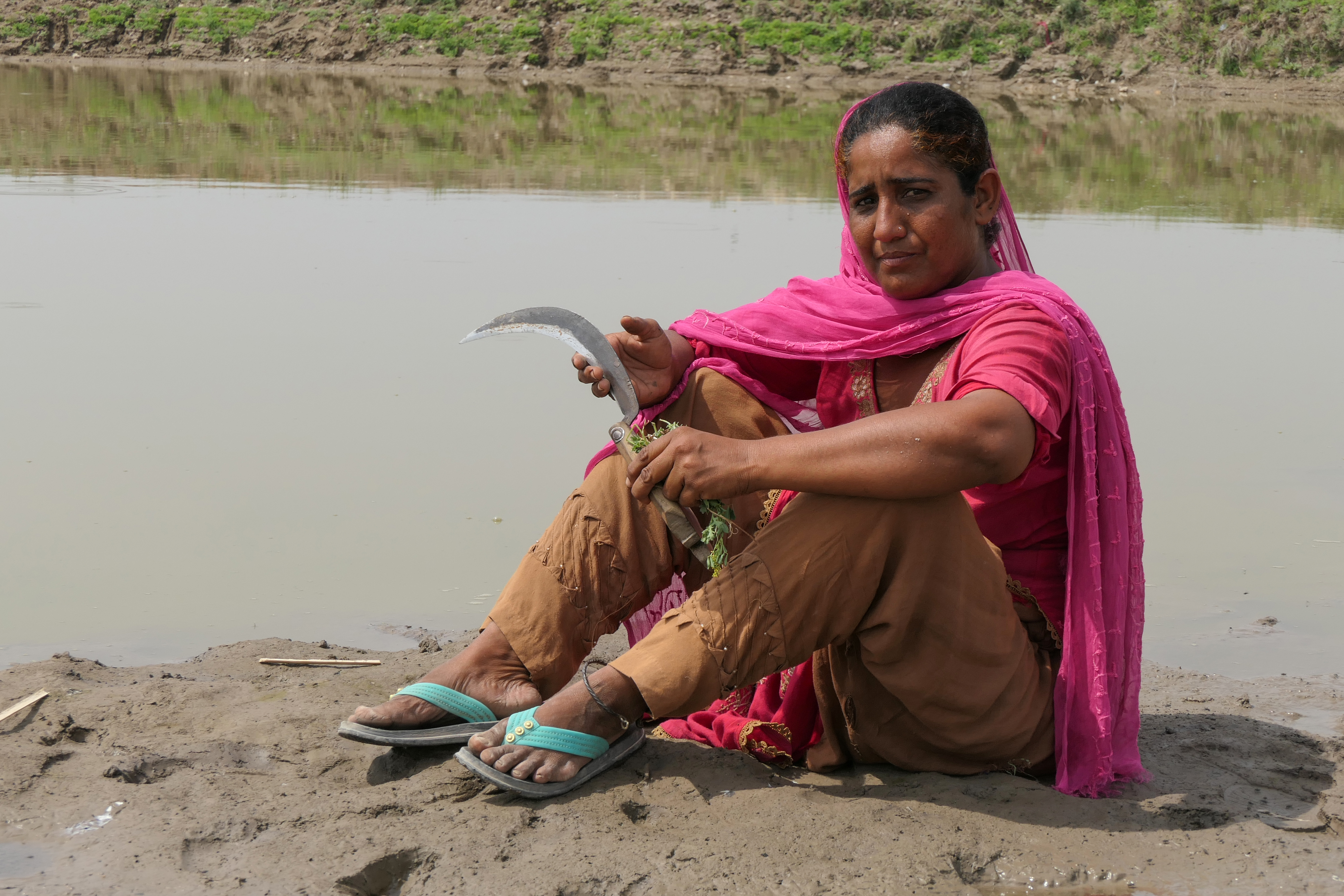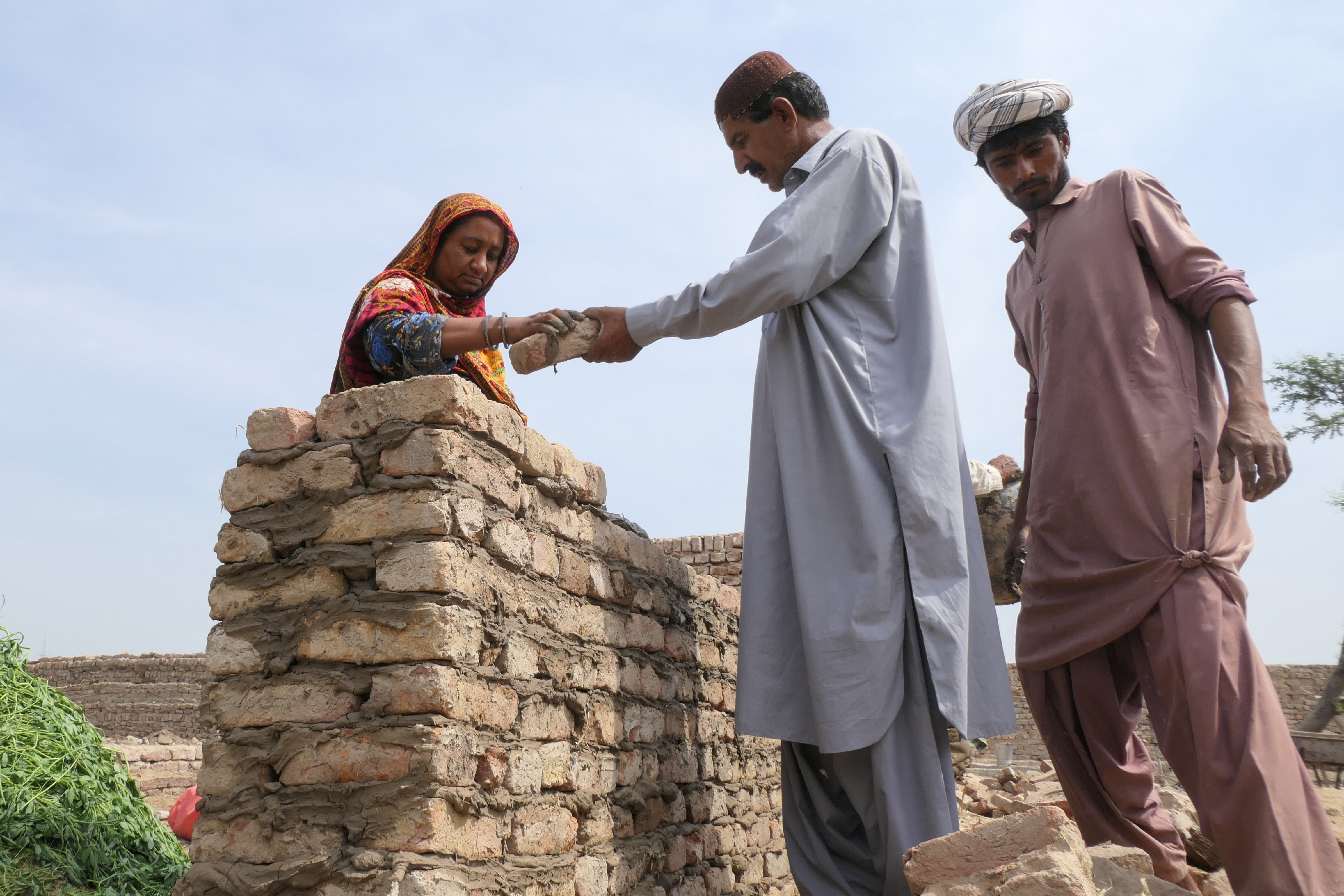
Dadu, Sindh, Pakistan – On a cloudy spring afternoon at Dital Khan Chandio village in Pakistan’s Sindh province, a group of female agricultural workers are busy stitching traditional handicraft items outside their makeshift tents next to stagnant floodwaters.
The village in Dadu district, about 380km (235 miles) from Pakistan’s largest city Karachi, was one of the worst affected by last year’s catastrophic floods, caused by melting glaciers and record monsoons – both induced by climate change.
The floods affected 33 million people, destroyed 2.2 million homes and killed more than 1,700 people.
For Haleema Aslam, the floodwaters brought distress and misery as they washed away her mature crops and livestock “along with her dreams”.

Indebted to a local landlord for years, the 45-year-old lost her livelihood in the disaster.
“Before floods I worked in the agricultural fields from dawn to dusk to raise my five children and raise my livestock to make ends meet. Now there is no land for cultivation and all my livestock – over a dozen goats, four buffaloes and three cows – drowned,” Aslam told Al Jazeera.
Seven months after the deluge, Aslam still feels the trauma of the August night, followed by days of walking after she was compelled to leave her house.
She is among 7.2 million female agricultural workers in Pakistan now exposed to extreme weather events, according to a 2018 report (PDF) by the United Nations.

“Living in the tents was difficult for me and my family. There were attacks of snakes and other reptiles, especially at night. So we moved back to our house after two months even though our house was submerged. But when we returned, it rained again and drowned our house, forcing us to migrate again,” said Aslam.
Women forced to stay in open-air tents for extended periods due to natural disasters have faced challenges related to privacy and societal norms, with Pakistan’s Minister for Climate Change Sherry Rehman calling the unprecedented floods “the worst humanitarian disaster of this decade”.
Despite donors pledging $9bn of flood aid to Pakistan, Aslam has not received a cent to rebuild her house.

Job losses and debt
The International Labour Organization (ILO) says disruptions and job losses due to floods affected about 4.3 million workers in Pakistan.
According to the ILO data, the percentage of female employment in the agriculture sector is 65 percent, making it the country’s biggest employer which contributes 23 percent to the nation’s gross domestic product (GDP).
But women are often denied labour rights and protections, employed without written contracts, and mostly get lower wages than men.
Moreover, with Pakistan being one of the most vulnerable countries to climate change, the agriculture sector remains particularly exposed to extreme weather conditions and their aftermath.
Seema Chandio, 43, is another resident of Dital Khan Chandio village whose house and 15 acres (six hectares) of land owned by her family were submerged for three months.
“Water stood up to seven feet in our house – well above my height. It took nearly three months to recede and we lived like nomads,” she told Al Jazeera.

When Chandio returned to her village, her house had completely vanished.
“We had bought seeds, fertilisers and pesticides from the market. All our rice and cotton crops were destroyed, resulting in a huge loss. We purchased the seeds, fertilisers and pesticides again for the next wheat crop, but we were unable to sow on time due to the presence of water that had not receded until January,” she said, as she worked on rebuilding her house.
“Since the floods, my family is under a debt of 300,000 rupees ($1,060). This amount does not account for the potential profits that could have been earned from the two crop seasons we lost,” she added.

Although the floodwaters have receded in most of the affected areas, 1.8 million people still live near dirty and stagnant water, according to the United Nations Office for the Coordination of Humanitarian Affairs (OCHA), leading to a loss of agricultural livelihoods for women for two consecutive crop seasons.
“My family’s bread and butter revolves around farming in which every member takes part. After losing the paddy crop completely, we could only cultivate wheat as water was still standing. It will hurt us the whole year as we would not be able to feed our family without any relief from the government,” Chandio said.
Labour and gender rights activists say last year’s floods that destroyed two consecutive crops resulted in a significant amount of debt for peasants, including women. When monsoons arrived, the standing crops of cotton and rice were washed away. As water did not recede in subsequent months, the upcoming wheat season was also severely affected.
“The situation has led to losses instead of profits from these back-to-back crop losses. Consequently, women farmers who were unable to work on their farms for six months or more are now burdened with debts,” Akram Khaskheli, a farmer, human rights activist and president of a charity group told Al Jazeera.
Azra Ameer still lives in a tent. She lost most of her cattle in the floods, leaving her with no means of income to support her family. With her husband sick and bedridden, she faces an uncertain future and an uphill battle to rebuild her life.
“The flood-related trauma we have faced in multiple forms will haunt us for a lifetime. It has shattered our lives,” the 30-year-old livestock worker told Al Jazeera.

Experts say that while developed countries set up a loss and damage fund at the 2022 COP27 climate change conference, it does not account for the losses suffered by vulnerable countries such as Pakistan.
“Any climate fund needs to be proportional to the damage that has been caused by the biggest emitters, and it should be mandatory for the biggest polluters to pledge a portion of their annual budget towards paying reparations and there should be a mechanism to enforce these payments,” Osama Malik, an environmental lawyer, told Al Jazeera.
However, Malik added that in Pakistan, where financial transparency is dismal, “there should also be a mechanism to ensure that money from the loss and damage fund should be utilised properly on flood victims such as female labourers and should not wasted inefficiently or embezzled”.
“In the past, we have seen that whenever a disaster has struck Pakistan, whether in the form of earthquake, floods or even COVID-19 pandemic, much of the funds or aid that came from abroad were utilised by the military without much oversight, resulting in further weakening of civilian institutions. It is hoped that any climate reparation funds will not be utilised in a similar fashion,” Malik said.
This story was made possible through the support of the United States Institute of Peace (USIP) Pakistan Program.
Zulfiqar Kunbhar contributed reporting.







